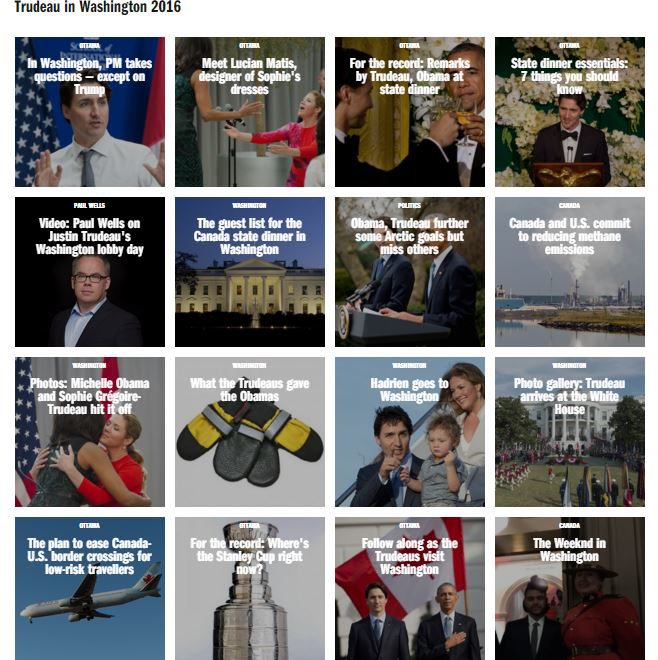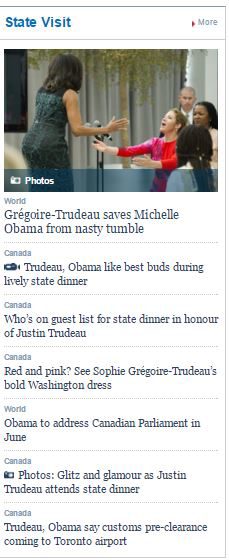Politics is about perception (and always has been). Official messages are carefully constructed to paint a specific type of picture. It’s the journalist’s job, theoretically at least, to find the flaws and the hidden distortions in that image.
But what if the picture is perfect and makes everyone happy? A hot prime minister meets a cool president, and they become instant BFFs. Their wives become new-found “soulmates.” It’s all jokes and smiles, glitz and glamour, flowers and champagne.
I get it–such coverage is the charm of a state dinner. It’s a story journalists have to write because it’s a change of pace from all the phobias and deaths front pages are too often filled with. And readers love it, as proven by the most popular lists on Canadian news outlets yesterday and today. It makes them happy. It makes me happy, for a little while at least.
The problem, though, is that such clickbait political coverage always gets taken too far. Newsrooms forget that even state dinners have foreign policy implications, which, if not obvious, need to be deciphered. While some of that was talked about, it was brief. Something about methane and the environment. A rumor about border control policies. Some announcement about Arctic goals.
Instead, in true BuzzFeed fashion, the Toronto Star gave us a play-by-play of how Sophie Grégoire-Trudeau saved new “soulmate” Michelle Obama from a nasty tumble off of the stage, seconds-apart pictures included. “Who needs the Secret Service with friends like this?” read the opening line of the article that would have worked better with GIFs.
Maclean’s decided a special photo gallery was needed to document the youngest Trudeau child’s visit. “Hadrien goes to Washington,” it was called in Hollywood-movie fashion. In fact, only 30 percent of the articles posted under a special heading on the Maclean’s website actually talked about policy discussion. The rest were photo galleries, fashion and decor coverage and transcribed speeches (see screenshot below), similar categories as coverage be the Star and others.


The problem isn’t new. This is what news dictated by clicks looks like, for the most part. It doesn’t have to be, and has been proven not to be, but it’s the easiest method of coverage, and difficult not to do when words like “bromance” are involved.
Having said that, caution needs to be advised and heeded. Pictures can be perfect, but politics isn’t. Canadian journalists need to get over how hot their new prime minister and his family are. Trudeau hugging pandas doesn’t warrant asking “Are the Trudeaus the cuddliest Canadian family of all time?” And do we really need additional widespread coverage of his attendance at the pride parade five months before it’s due to take place, when it was already announced at the end of last year? Maclean’s 60-second interviews were fun to watch, but where are the investigations on fiscal policy, or follow-ups on MMIW and other campaign announcements?
At some point the celebration of our picture-perfect prime minister and his government needs to end, and journalists have to go back to basics. Make us happy, but keep us informed.
About the author
Fatima Syed is the blog editor of the spring 2016 issue of the Ryerson Review of Journalism.
